When you’re a historical costumer going to Europe, obviously you have to take at least one costume for dressing up in front of castles in!
But…luggage allowances…
So, what’s the historical period with the combination of prettiest clothes and least heavy layers?
1790s!
Back in 2020, at the end of New Zealand’s first lockdown, I found an amazing ramie-cotton blend fabric with an adorable pineapple print on it:
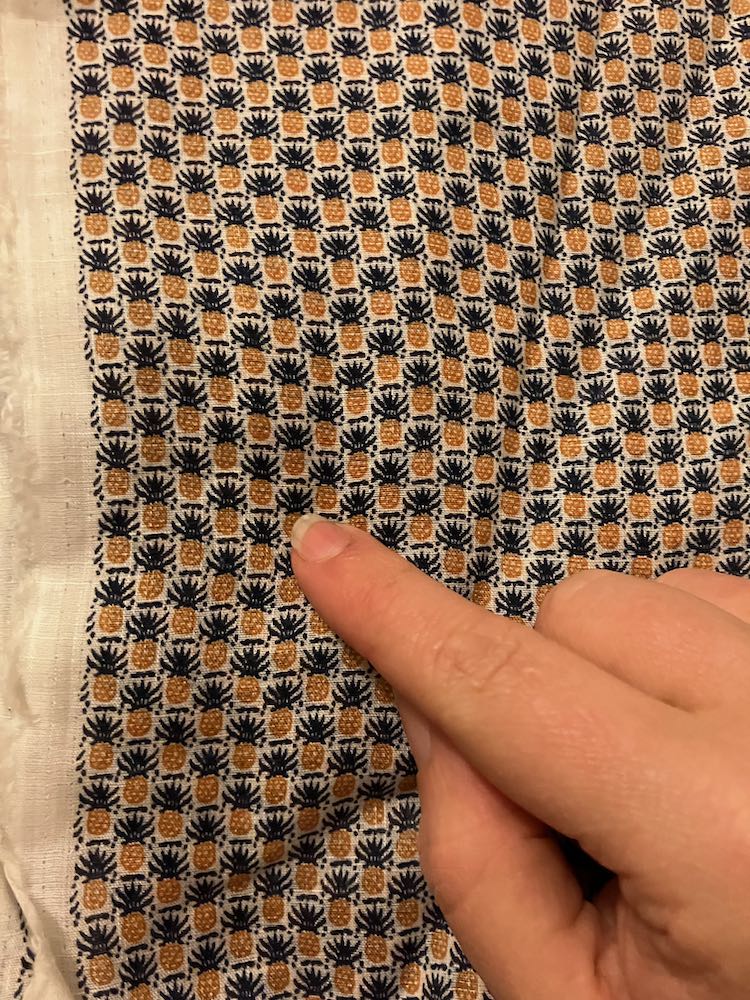 The print is not accurate of course. However, it is perfectly in keeping with the late 18th and early 19th century obsession with pineapples, and it’s so tiny that from even a slight distance away it looks like a plaid or geometric print.
The print is not accurate of course. However, it is perfectly in keeping with the late 18th and early 19th century obsession with pineapples, and it’s so tiny that from even a slight distance away it looks like a plaid or geometric print.
The fabric is also not accurate, but is a feel and type of fabric that seamstresses of the era would have recognised. Ramie like this (made from Boehmeria nivea from Asia) was unlikely to have been used in the 18th century, but European nettle cloth (from Urtica dioica) was widely used in Europe until the late 19th century. It can be difficult to tell nettle cloth apart from linen once woven, so some items identified as linen in museum collections are likely to be nettle cloth.
Very helpfully for travelling, the fabric is extremely lightweight, not prone to creasing, and not so see through that it needs lots of layers. Most importantly, the fabric makes me happy!
For the pattern I settled on a mash up of this dress:
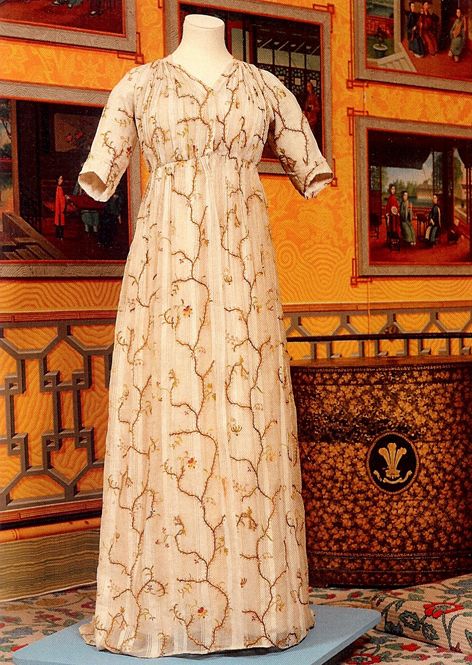
Dress of tambour embroidered cotton, ca. 1795, featured in the Dress for Excess’ Exhibition at Brighton’s Royal Pavilion, Sussex, Britain – opened 05 Jan 2011
And this fashion plate (yes, that’s a pineapple on the turban!):
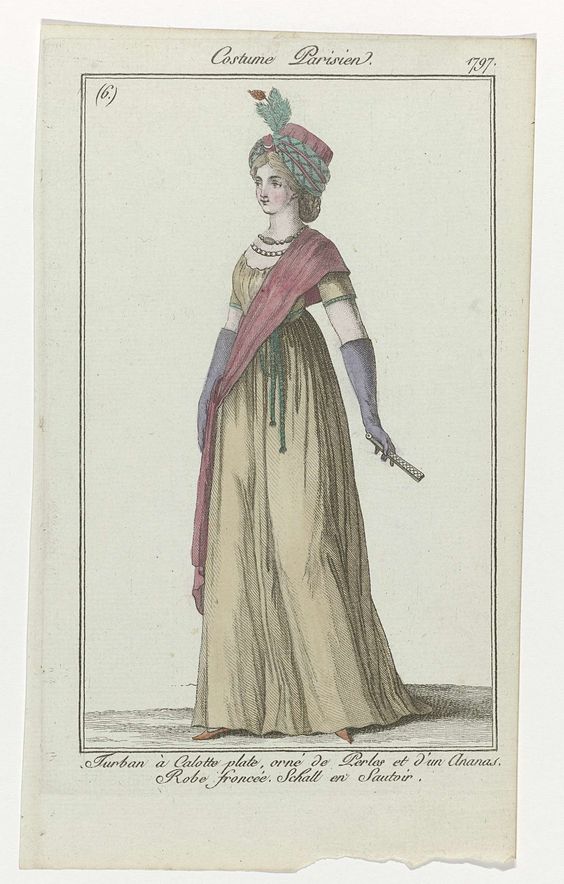
Journal des Luxus und der Moden, September 1797
I also heavily referenced the famous ca. 1797 wedding dress from the National Museum in Denmark (often called the Tidens Toj dress), and looked at 1790s dresses in Patterns of Fashion and The Cut of Women’s Clothes for more guidance on the cut of the sleeves and bodice, and accurate skirt widths.
With help from my wonderful sewing friends (and, of course, Felicity), I developed a pattern, fitted a bodice toile, and began sewing.
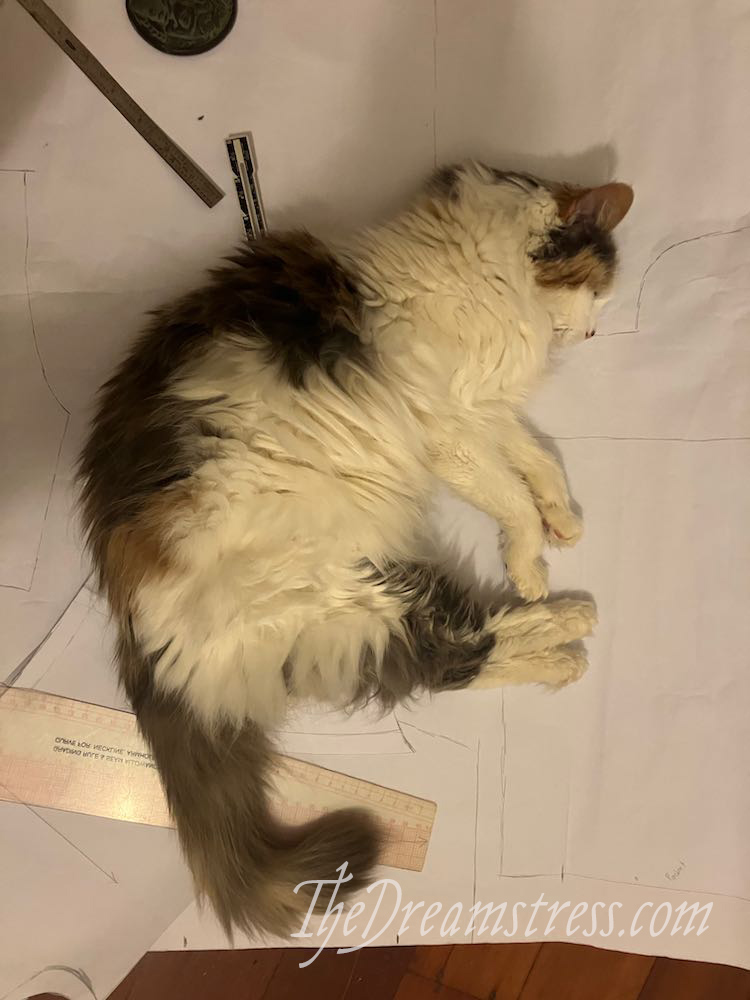 First the lining goes together:
First the lining goes together:
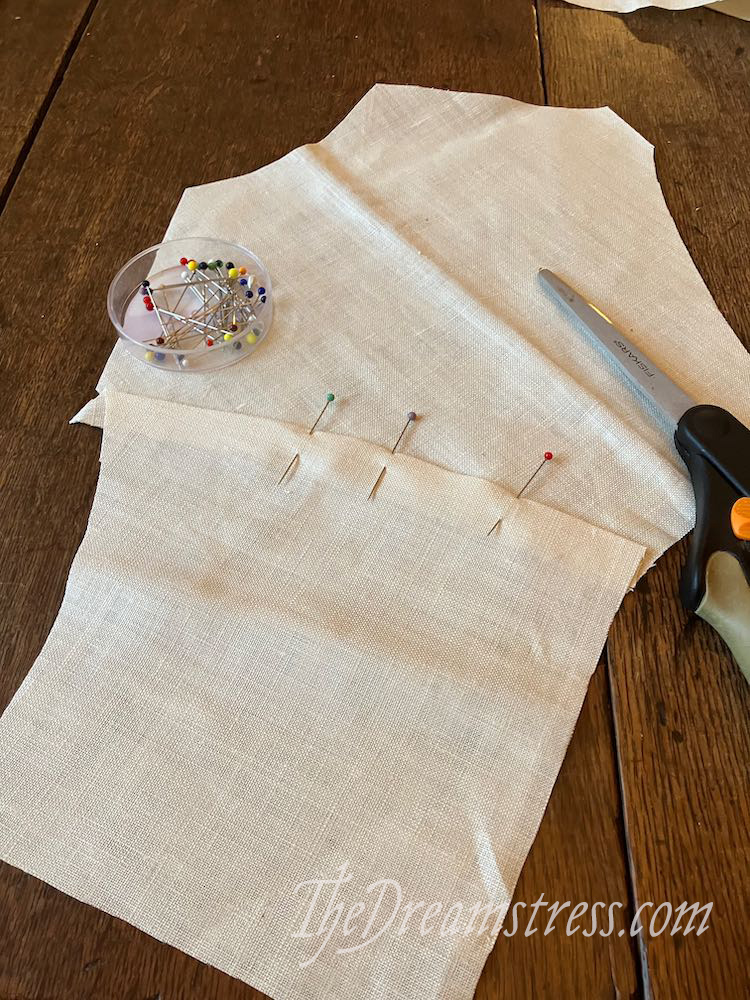
Then the outer fabric gets applied:
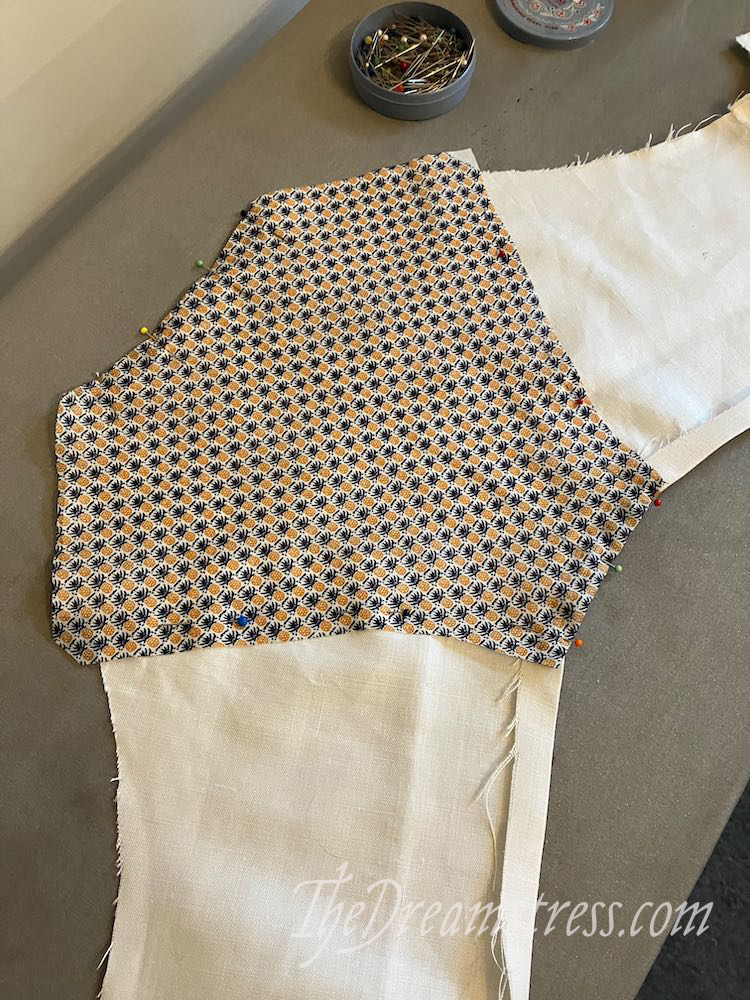
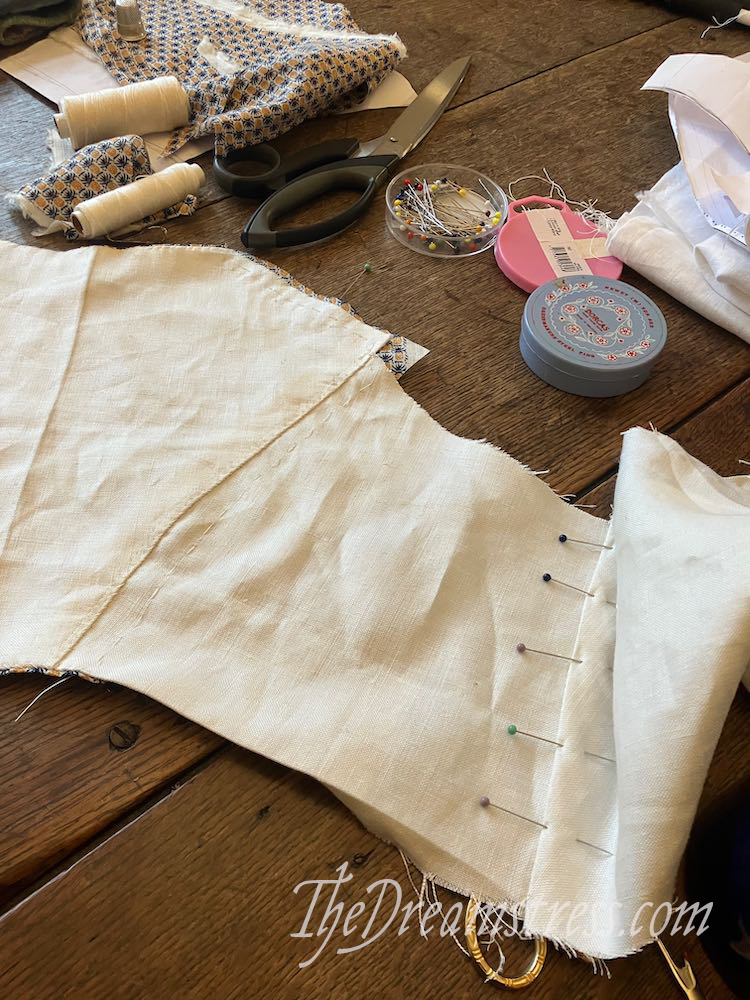
And then sleeves get sewn:
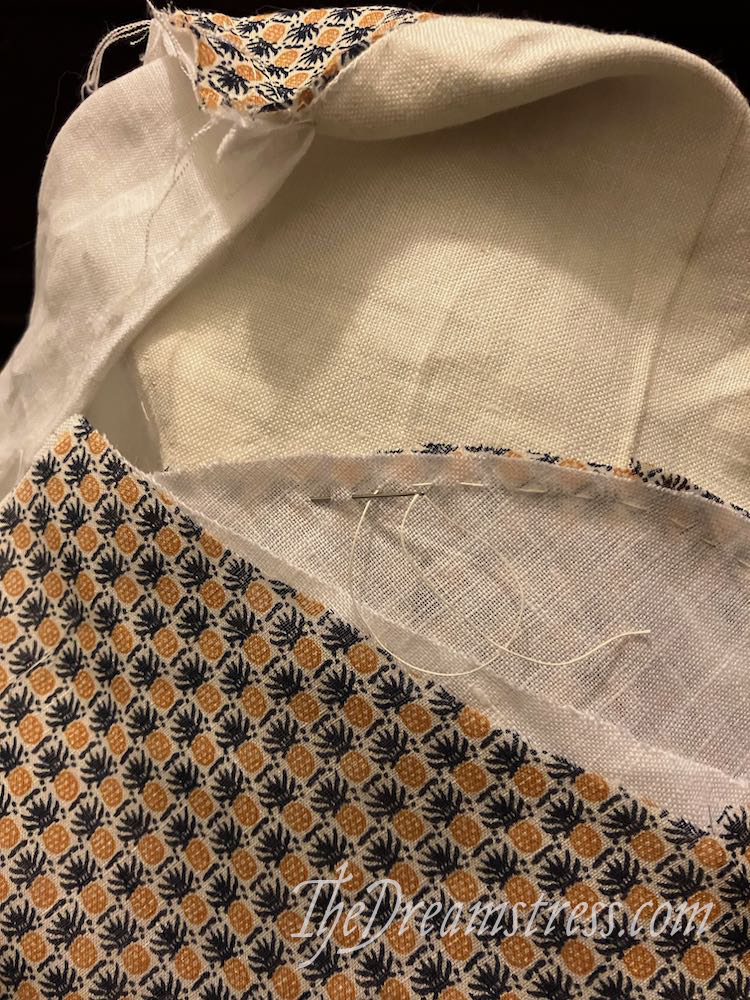
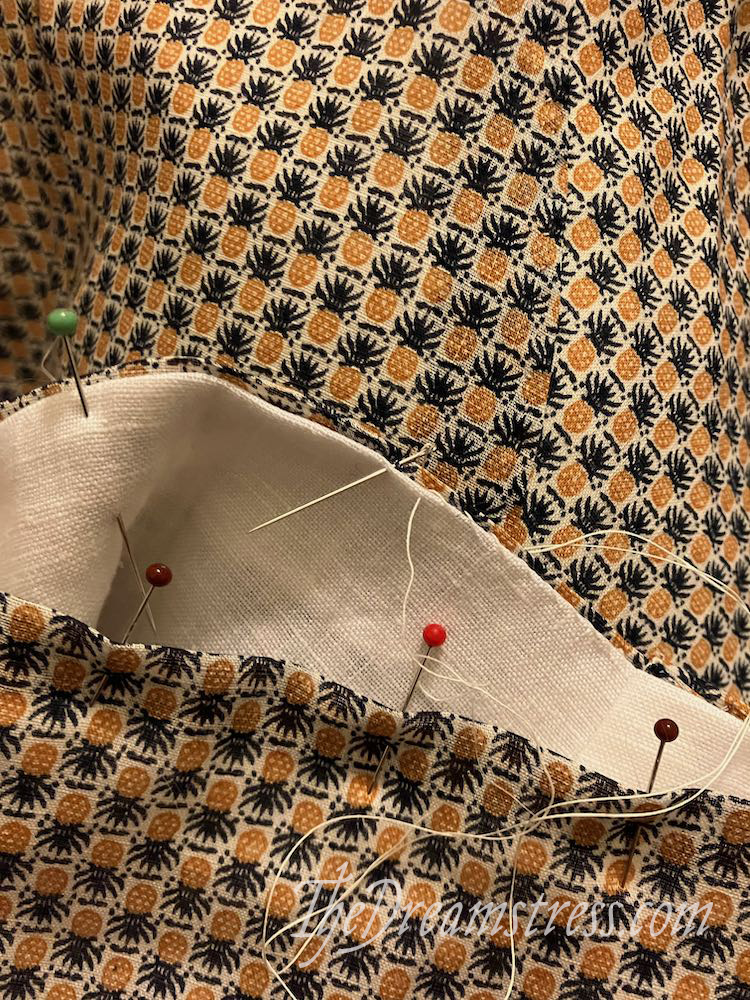
And inserted in to the under-armscythe:
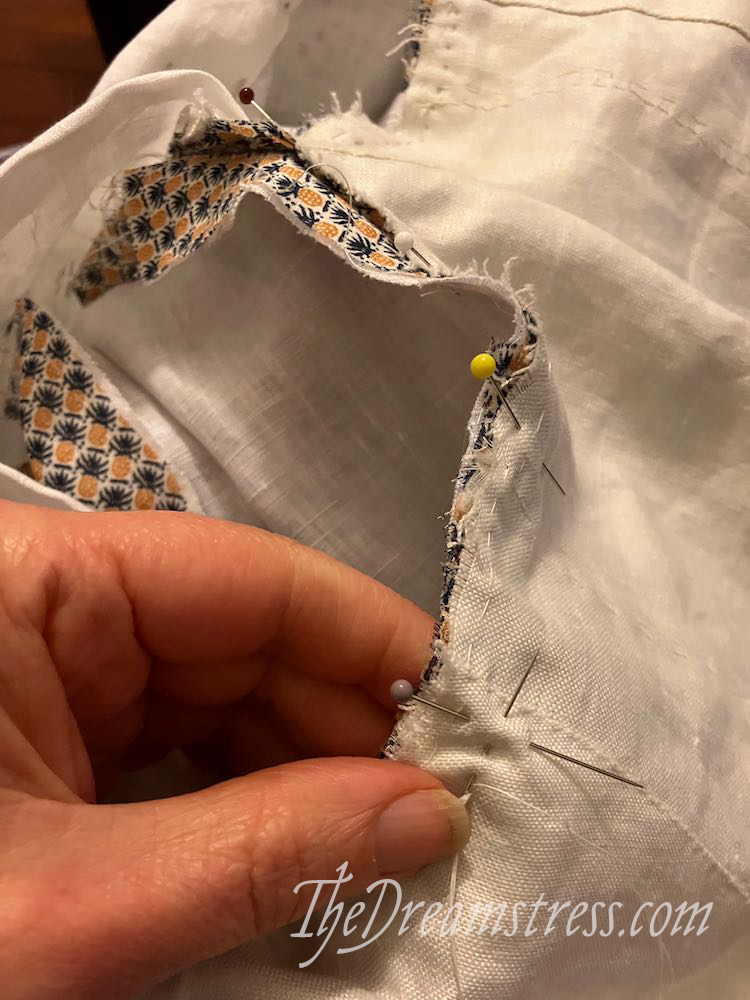
And pleated over the strap:
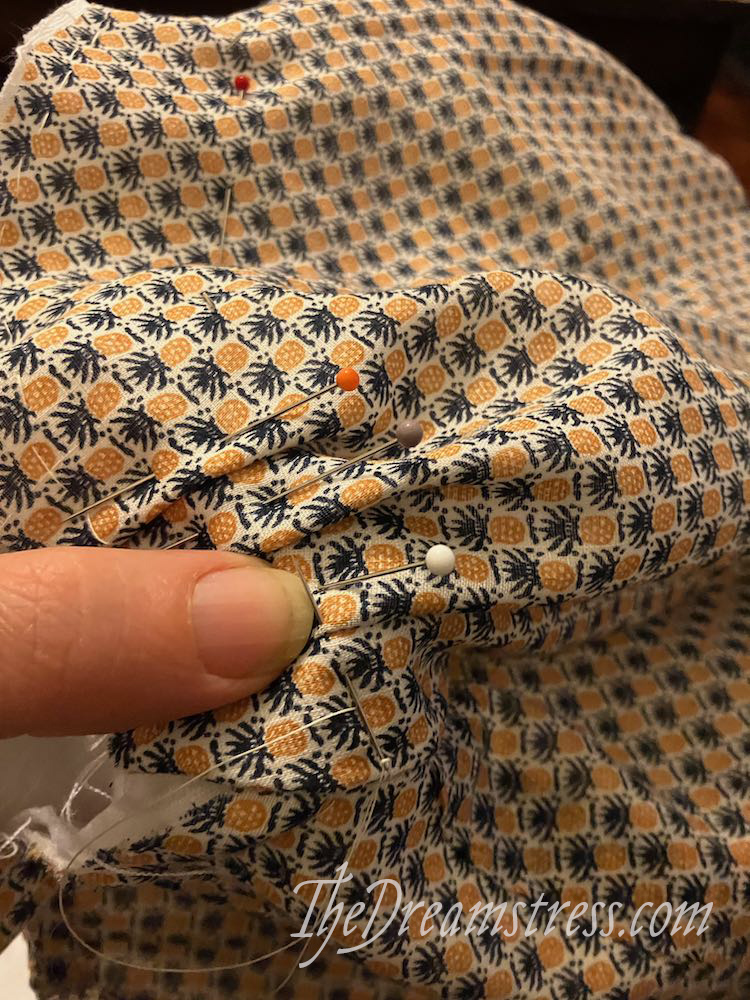
And then I sewed a channel for the front skirt drawstring:
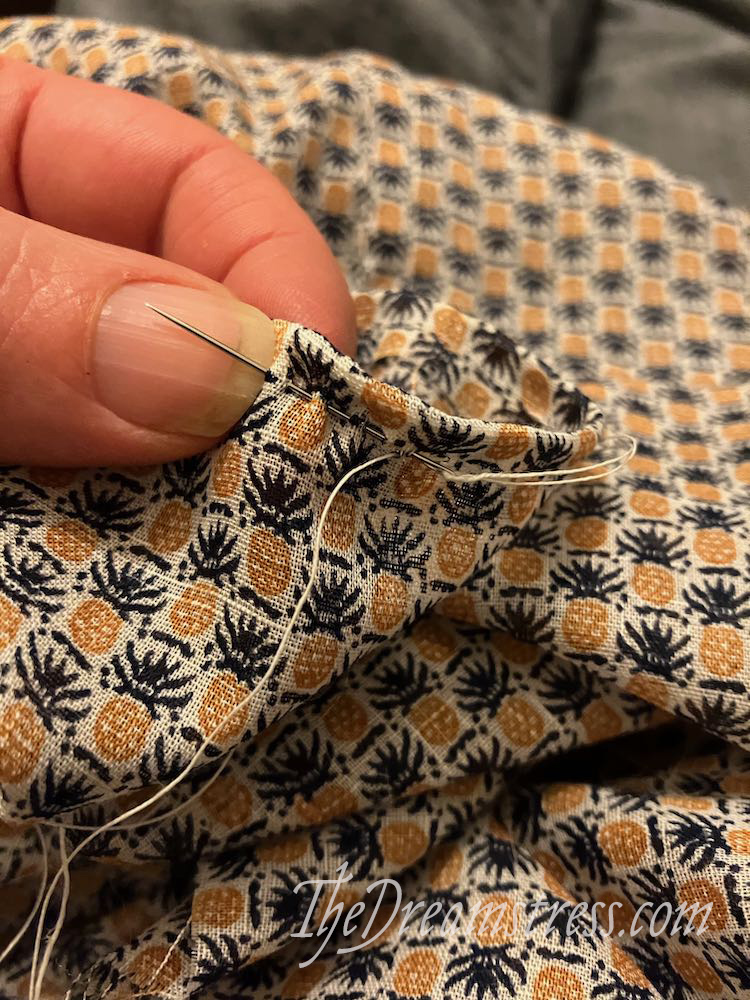
And made lots and lots of tiny pleats in the back of the skirt:
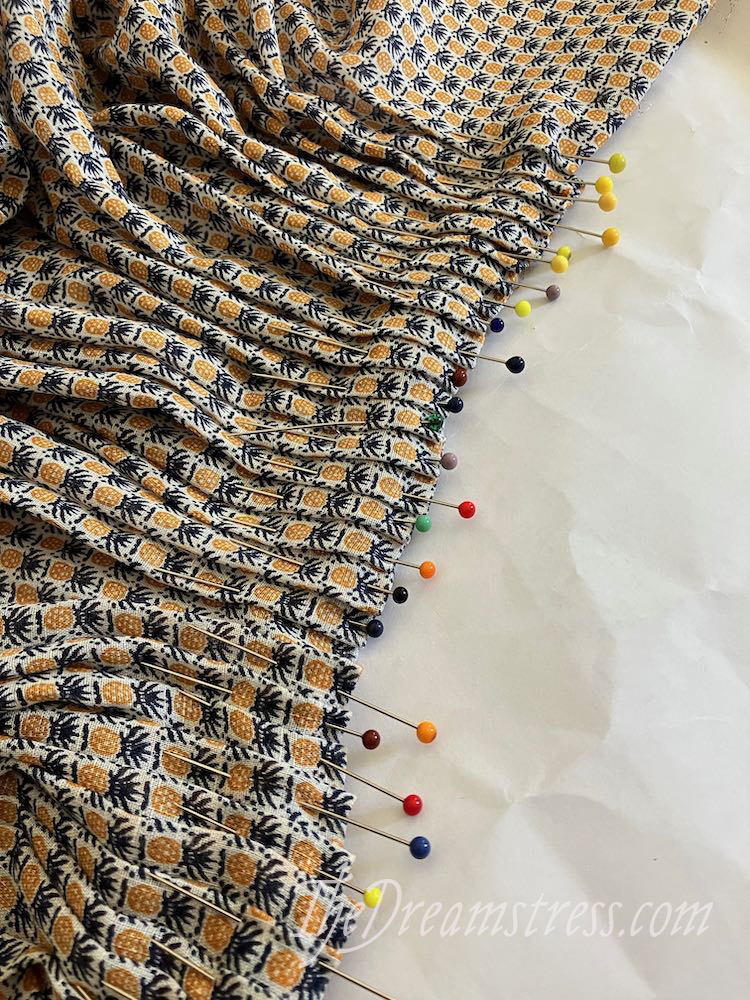
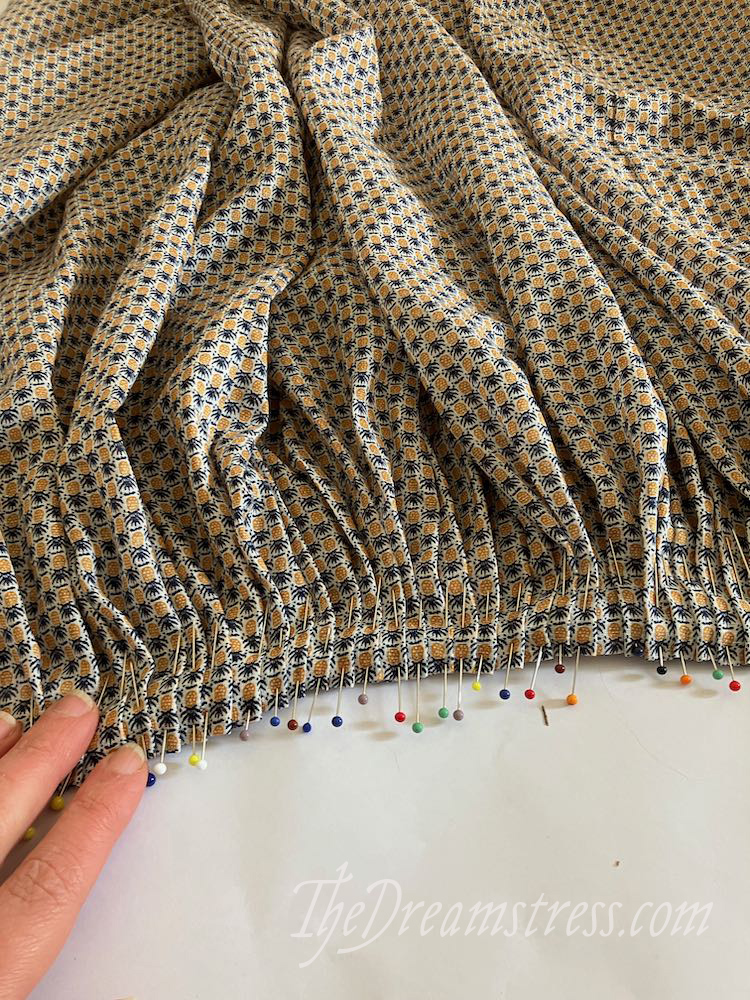
And then basted them all in place. It’s ALWAYS worth the time to baste things in place, because it means you get the final sewing right, and when you don’t get it right, you can unpick and re-adjust without things moving about.
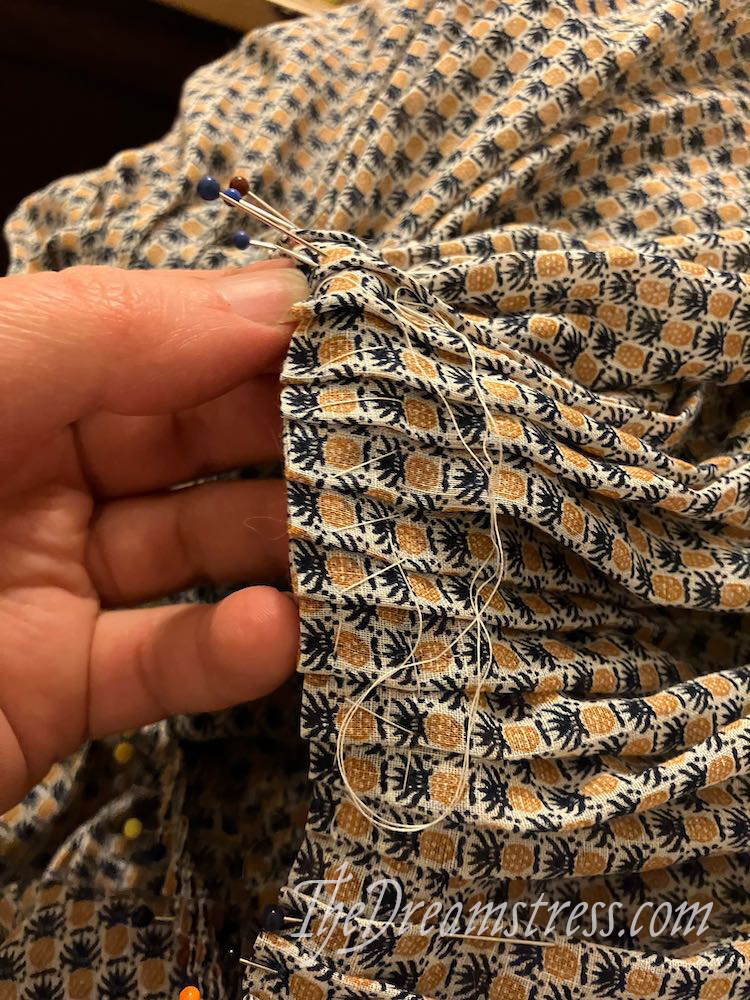
Did I mention unpicking?
Yeah…
I whipped the skirt on to the bodice while flying from Wellington to Sydney:
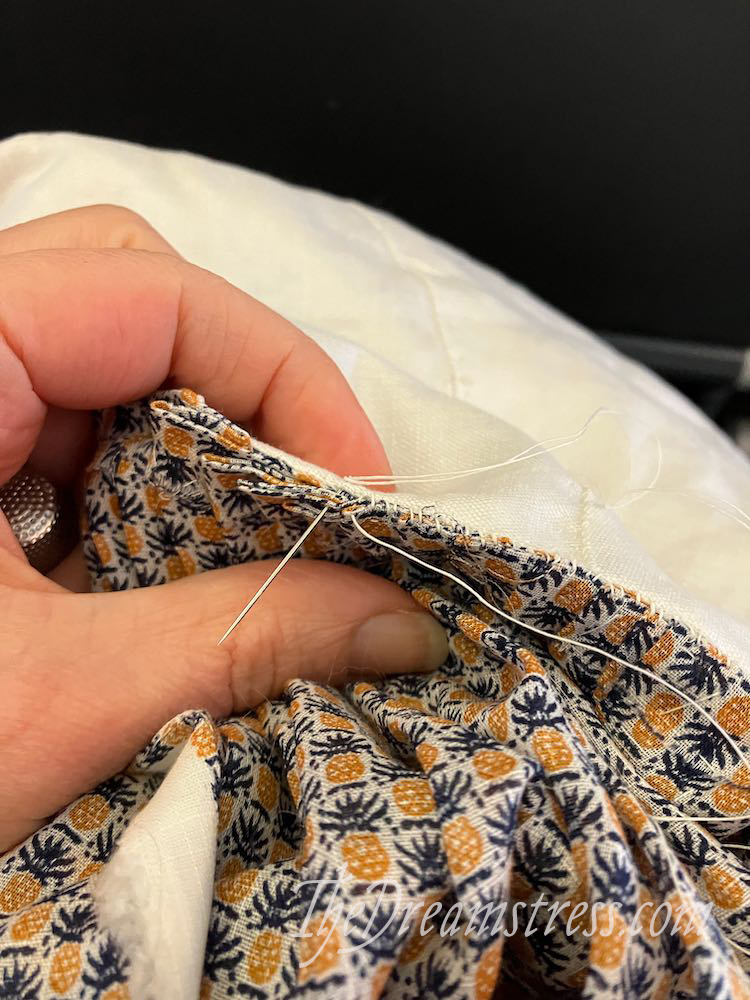
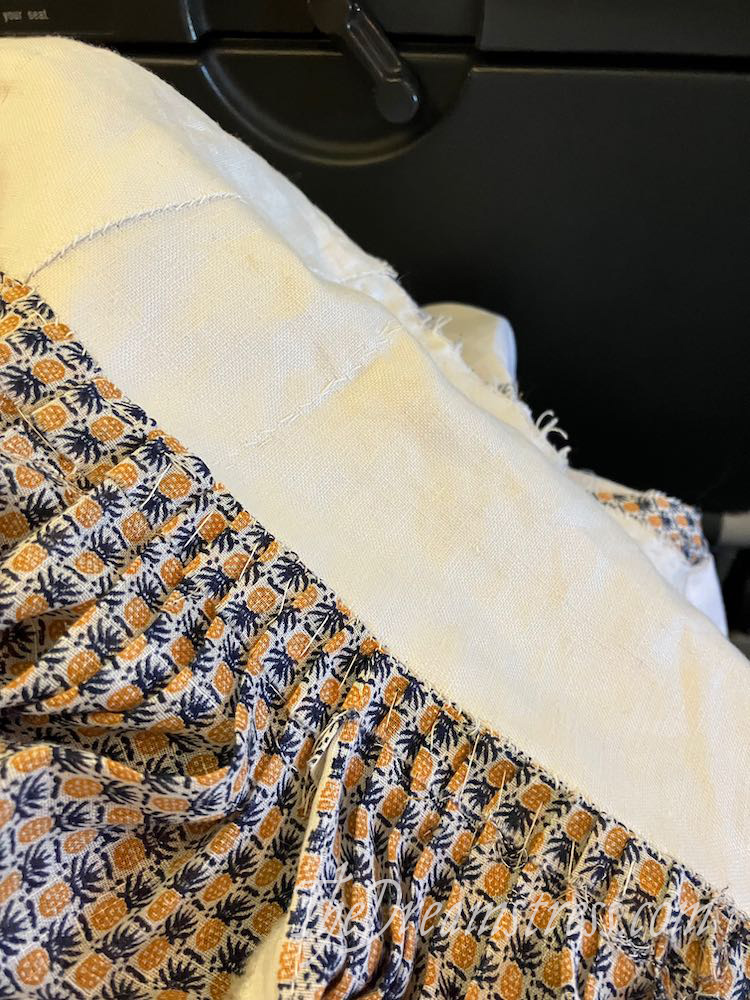
From Sydney to Dubai I finished interior skirt seams and hemmed:
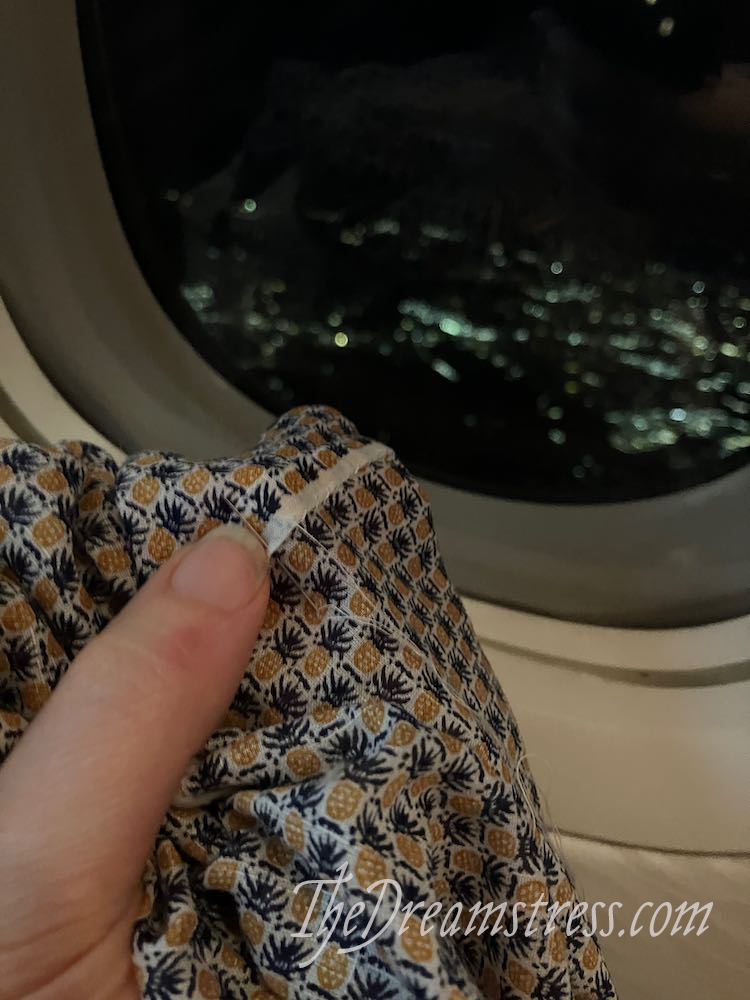
And then I got to Sweden and tried on the dress with Elisa’s (@isiswardrobe) help, and realised the way the waistline dipped down under the arms and then raised back up again wasn’t right:
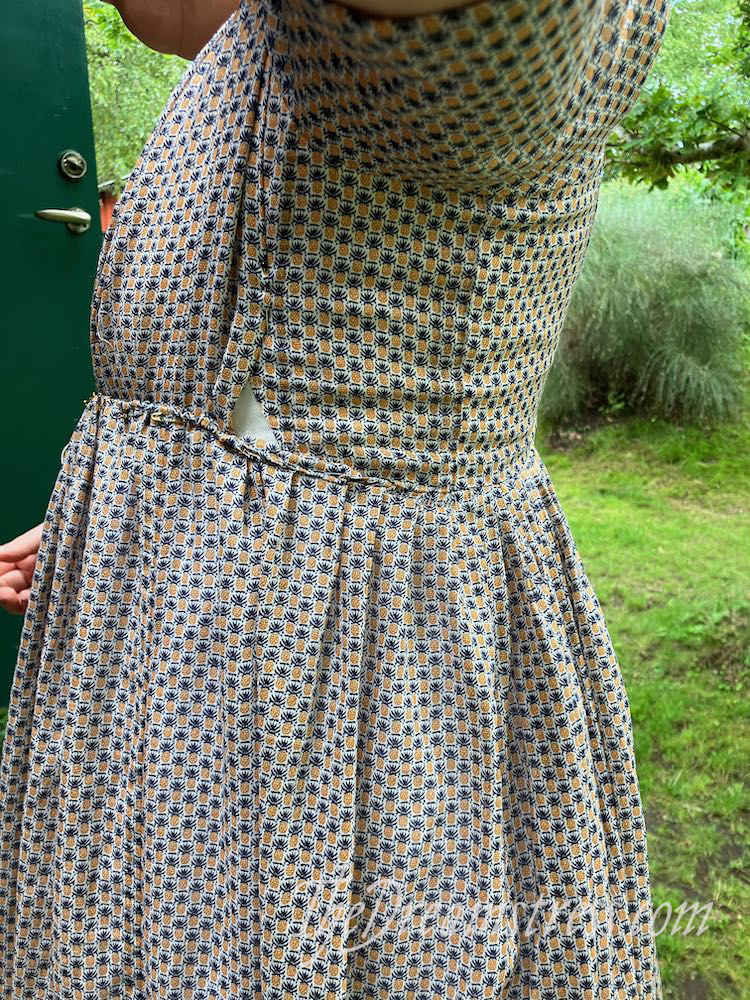
The white areas are places where I had to piece in scraps of fabric. There is SO MUCH piecing under the arms of this dress. I don’t have a scrap of fabric bigger than 2cm x3cm left!
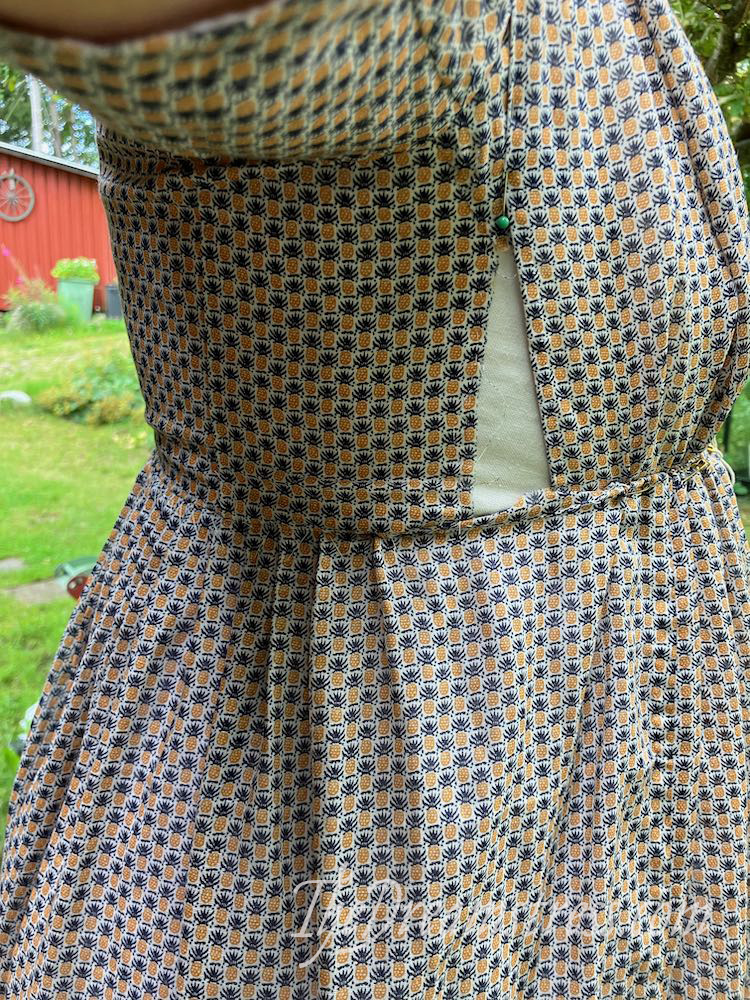
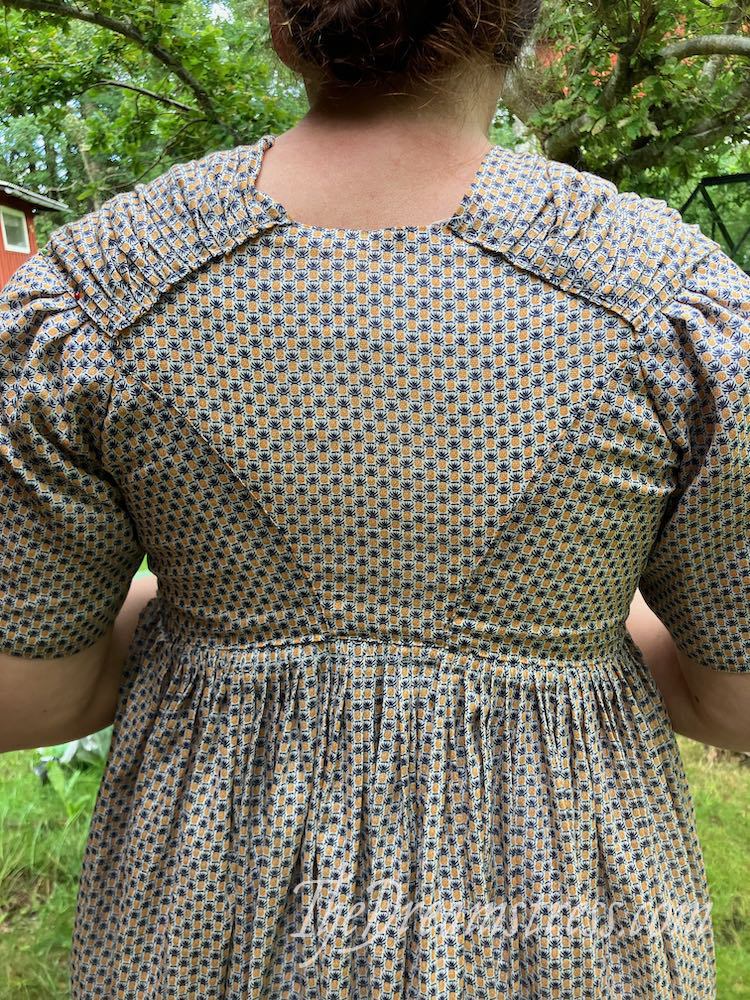
So I unpicked, adjusted the bodice end line, and re-set the skirt. Three times…
But at least I had the most gorgeous sewing spot in the world to do it in!
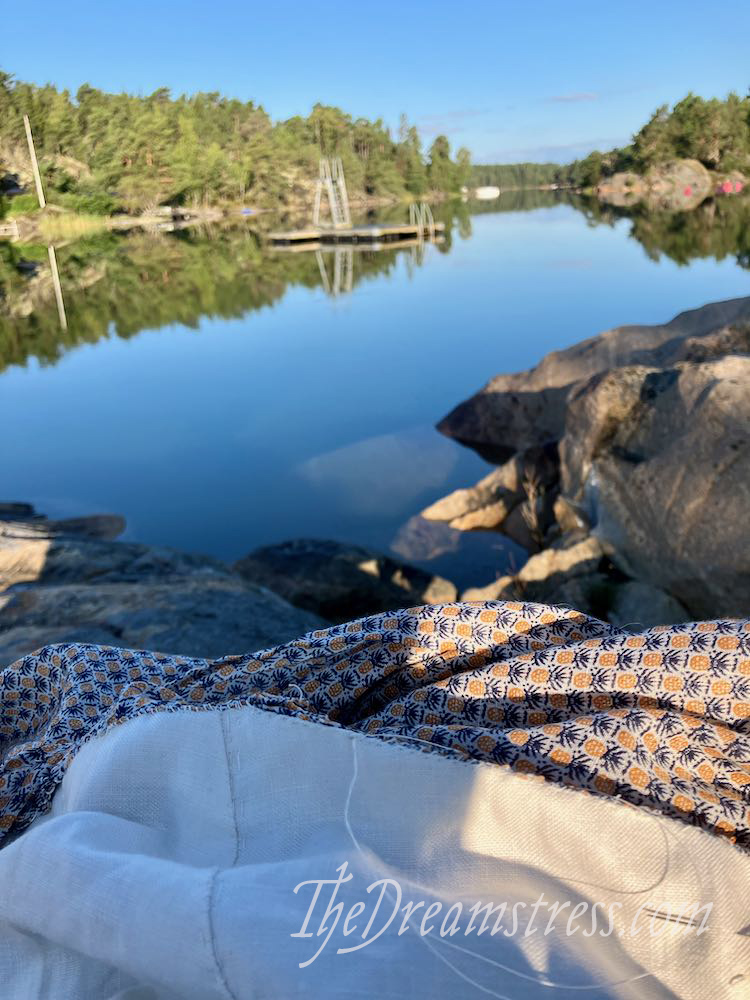
Seriously!!!
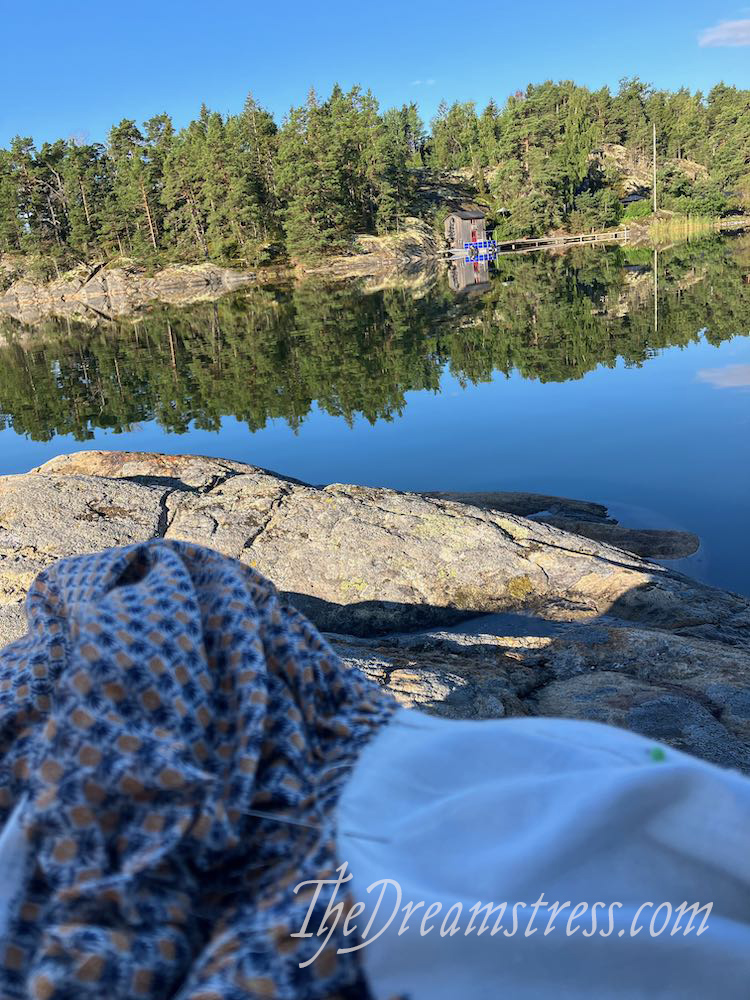
And finally, finally, it was done!
I got to wear it at Kina Slott at Drottningholm in Sweden:
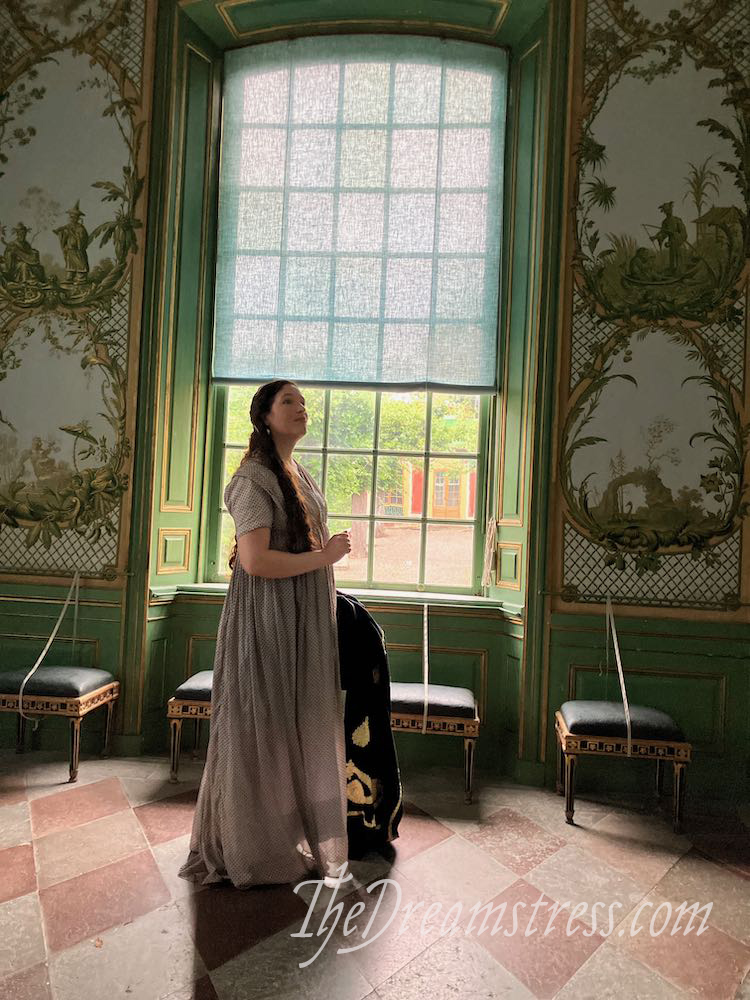
And at two different locations in Czechia:





And I’ll be blogging about all those places in due course!
There’s a few things I’d change about the dress if I made it again (as there is with almost everything I make except Scroop Patterns, which I test so obsessively), but it’s fun to wear and was easy to carry around Europe.


Looks lovely ,just the thing for the weather right now too
I see Miss Fliss added some fur too
Miss Fiss will always get involved if she can!
This is further proof that somehow 1797 is the year when the 1790s settled into the best silhouette. 😀 When you said you had used the fabric up almost to the last scrap, I had no idea there had been so much resewing and piecing involved! The finished dress shows no obvious signs of it. 🙂
It’s gorgeous and that is such a fun fabric. I have some ramie in stash but I’m not 100% sure I haven’t mixed it up with some of the linen.
Thank you! The fabric was indeed just too fun not to use. And yeah, it’s so easy to mix up ramie and linen – I have at least one piece I absolutely cannot remember if it’s one or the other.
It’s always so fun to see historical clothing in historical settings; it’s properly transporting.
I’ve always wondered what ramie would feel like to the touch/to wear — to my knowledge, I’ve never had it in hand. The dress looks delightfully cool and airy.
Thanks as always for taking us on these fun adventures with you 🙂
Ramie feels like cotton or linen, having dealt with ramie voile from Burnley and Trowbridge. It’s nice stuff.
You’re most welcome! Glad you enjoyed them 🙂
Ramie is a bast fibre like linen, so it feels a lot like linen.